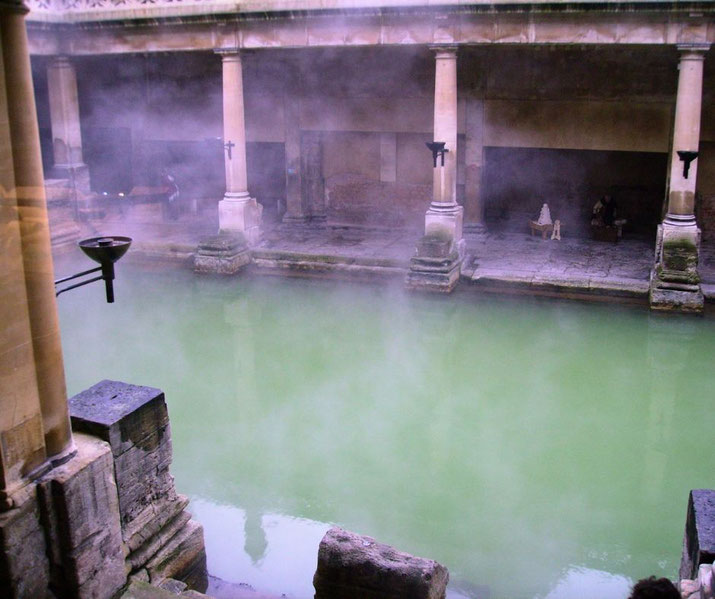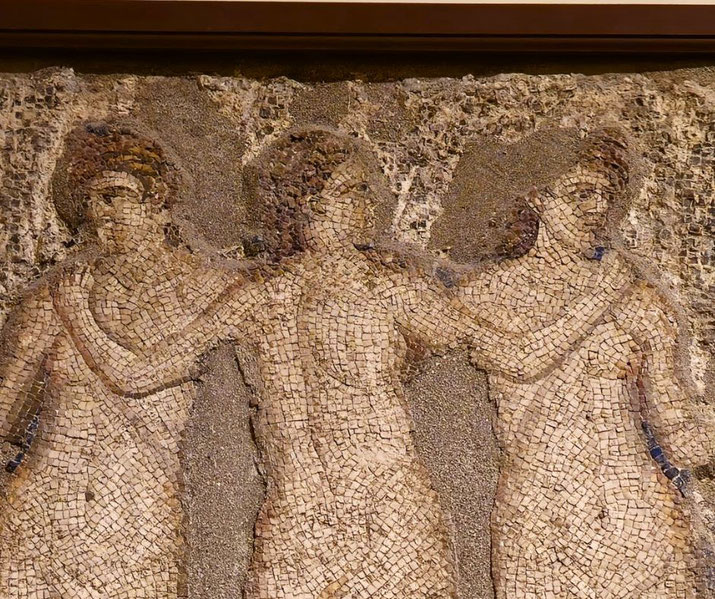From caldarium to frigidarium: The awkward allure of the ancient Roman baths

The ancient Roman bathhouse was less “spa day” and more “strange, shirtless gathering.” Imagine a setting where a plunge into cold water could lead to a new business partner, a poetry reading, or an unpleasant fungal infection.
It also served as a social hub rather than only a place for cleanliness.
A brief history of Roman baths
As Rome grew across its empire, the design of baths spread to its regions, leading to the construction of many baths in cities across Europe, Africa and Asia Minor. This spread showed the value Romans placed on communal bathing.
By the 1st century CE, bathhouses had become a key part of Roman life. These centres were built to hold large crowds, often up to 3,000 people at once.
They provided space not only for bathing but also for business and leisure.
Roman bath complexes reached their peak under the Empire in the 2nd and 3rd centuries CE.
Emperors built ever larger thermae as public monuments. The Baths of Caracalla in Rome, built CE 212 to 216, and the Baths of Diocletian, opened CE 305, are prime examples.
Each covered about 10 to 12 hectares and included a full range of rooms. These imperial baths showed their engineering skill.
For instance, Caracalla’s central frigidarium had a dome 30 metres wide supported on just eight pillars.
Diocletian’s had multiple hot and cold pools under spacious vaults. Builders adorned these structures with mosaic floors and marble walls and columns to highlight their splendour.

A variety of rooms
Roman public baths, the thermae, were impressive buildings that combined hygiene, leisure and social life.
Although local styles varied slightly, the classical Roman bath kept the same basic design.
Bathers moved from warm to hot to cold areas, thanks to skilful heating and plumbing.
By the 1st to 3rd centuries CE, the Romans used the same design for their thermae, featuring a series of heated and unheated rooms.
A typical complex included rooms arranged around a central garden or courtyard. Below is an overview of the rooms in a common Roman bath:
Apodyterium
The changing room at the entrance, where bathers left their clothes.
Tepidarium
A warm room that served as a bridge between the cold entrance and the hot baths. Its floors sat on brick pillars, called pilae, so warm air could flow beneath.
Caldarium
The hottest chamber, a steam room with hot water. It contained a large heated pool and one or more cold-water basins for relief. The floor and walls were warmed by an underfloor hypocaust and wall flues, making the air and surfaces hot and steamy.
Frigidarium
The cold room with a plunge pool, often the final stage of the ritual. This vaulted hall sometimes featured a dome and mosaic floors. Bathers dove into its cold pool to refresh themselves after the hot rooms.
Palaestra
An open courtyard surrounded by a colonnade, used for exercise and sports. This gym area included sand pits or shallow pools and spaces for wrestling, boxing, discus and weightlifting.
Each part served a specific function and followed a set order. Ancient writers described the bathing ritual step by step: after undressing in the apodyterium, the bather moved into the warm tepidarium, then into the steamy caldarium, and finally into the frigidarium for a cold plunge.
The brilliance of the hypocaust
The Romans’ hypocaust heating system was a clever engineering feature that defined bath architecture. The name hypocaust means “heat from below”.
A furnace room with wood-fired boilers (the praefurnium) was built at a lower level.
In this location, furnaces heated bronze or copper boilers of water and sent heated air through the space under the floor.
Pillars (pilae) of brick or tile supported the floor slab, as in the image above. After that, hot gases flowed under the floors and then up hollow clay tubes (tubuli) embedded in the walls.
These wall flues carried warmth to roof level and vented smoke out above. To expand such spaces, Roman engineers also used concrete (pozzolana cement) and arches or vaults.
For instance, large vaulted ceilings and clerestory windows were employed to roof and light the vast frigidaria and caldaria.
Floors in the heated rooms were often paved with marble or mosaic tiles, and the walls were lined in marble to protect the brickwork and retain heat.

Hot and cold bath rooms
The tepidarium and caldarium were heated by the hypocaust system. The caldarium, being the hottest, functioned as a humid sauna: it often had a vaulted dome or groin vault overhead and a large hot-water basin or plunge pool at one end.
To aid comfort, cold-water basins at the caldarium exit allowed bathers to splash cool water on themselves before leaving.
The tepidarium next door had gentler heat and warm benches; it let bathers adjust gradually without shock.
The frigidarium, the cold room, was the final step of the bath sequence. This room usually featured a central cold-water pool with steps, surrounded by bench seating.
In some cases, its ceiling was often very high or domed, and clerestory windows admitted light from above.
After sweating in the caldarium, bathers took a “bracing plunge” in the frigidarium’s cold pool.
The water typically came from the city aqueduct or from cooled hot water. Even the vaulted architecture often remained after centuries as evidence of these grand halls.
You could do more than bathe
The palaestra was typically a rectangular open courtyard, often planted or paved, used for exercise and games.
For example, the famous Palestra Grande in Pompeii was surrounded by a covered colonnade and included sand pits and a shallow pool.
Bathers might wrestle, box, throw discus, or lift weights in the palaestra. After working out, they could rinse off.
Then they could proceed into the adjoining tepidarium or caldarium to continue the bathing ritual.
These sports courts highlight that Roman baths were for more than washing; they also supported athletics and socializing.
Who went to the baths and why?
Roman baths were more than just places for cleanliness; they played a vital role in the social and cultural life of ancient Rome.
People from all social classes frequented the baths, creating a unique environment for social interaction and relaxation.
Entry to Roman baths was inexpensive, with a typical entry fee of a quadrans, the smallest Roman coin, and some were even free.
Women could use public bathhouses but were often restricted to separate facilities or designated hours.
Patrons would bathe and also indulge in various activities such as reading, discussing politics, conducting business, or simply enjoying the company of friends.
The baths also served as an important venue for promoting the Roman way of life and values.
The lavish decoration, including detailed mosaics, frescoes, and statuary, showcased the wealth and detail of the empire.
Furthermore, the availability of public baths to all citizens, regardless of social status, symbolized the Roman commitment to public welfare and hygiene.

Decline
The decline of the Western Roman Empire in the 5th century CE saw the decay of many bath complexes.
As political instability and economic decline took hold, maintaining and constructing new bathhouses became less important.
In some regions, the practice of public bathing continued through the Byzantine period, while in others, it faded away.
Despite their decline, Roman baths continue to inspire modern architects and engineers, while the concept of public baths and spas remains popular in many cultures around the world.
What do you need help with?
Download ready-to-use digital learning resources
Copyright © History Skills 2014-2025.
Contact via email
With the exception of links to external sites, some historical sources and extracts from specific publications, all content on this website is copyrighted by History Skills. This content may not be copied, republished or redistributed without written permission from the website creator. Please use the Contact page to obtain relevant permission.





